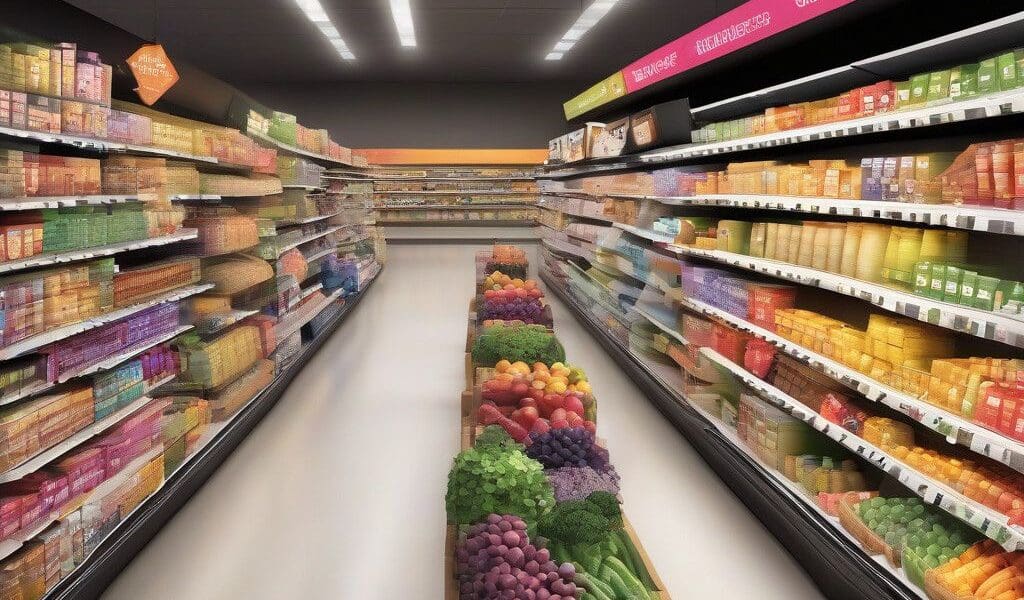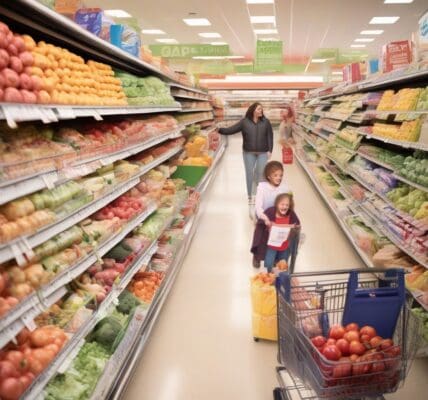In recent years, personalization in the grocery sector has emerged as a game changer. A report from industry insights firm Incisiv and Wynshop, titled “State of Grocery Personalization 2024 Report: High Potential, Largely Untapped,” reveals significant insights into the current state of grocery personalization and highlights the barriers preventing retailers from fully leveraging this potential.
One of the most compelling findings from the report suggests that adopting personalization strategies in grocery retail could unlock a staggering $12.3 billion in value. This figure stems from data indicating that 91% of grocery stores that implemented shopper segmentation and targeting saw an increase in conversion rates. Moreover, personalizing the online grocery experience led to an average conversion rate increase of 6.2% and a 3.7% growth in basket size. Collectively, these improvements represent substantial incremental sales growth potential.
Despite these promising statistics, the report indicates that many grocery retailers are held back by several factors, primarily data silos and a lack of strategic direction. Grocery executives identified three main hurdles limiting their personalization efforts: an inability to integrate data from various sources (57%), a poorly articulated personalization strategy (51%), and insufficient specialized in-house staff and skill sets (44%). This scenario portrays a concerning gap between the potential for personalization and the actual execution of strategies aimed at achieving it.
The survey conducted in August 2024 targeted 117 senior grocery executives spanning both business and technology functions. This analysis not only underscores the importance of personalization in meeting shoppers’ expectations but also emphasizes its role as a competitive driver. An impressive 89% of respondents concurred that personalization is vital for meeting consumer demands, with 77% asserting that personalization directly contributes to sales uplift.
However, the gap between belief and execution presents a stark contrast. Only 14% of grocery executives felt their current personalization initiatives meet or exceed shoppers’ expectations. Alarmingly, 37% admitted that their organizations provide no personalization at all. Just 4% claimed their companies had advanced personalization capabilities scaled across operations.
Gaurav Pant, chief insights officer at both Incisiv and Grocery Doppio, remarked that such a low percentage of grocers achieving an advanced stage in personalization maturity reveals significant opportunities being overlooked. He advocates for a C-suite priority on personalization, stressing the necessity for a clearly articulated strategy that focuses on impactful use cases, such as tailored product recommendations and customized promotions.
The sentiments echo those of Spencer Price, VP of strategy at Wynshop, illustrating that personalization extends beyond merely streamlining the shopping experience. It nurtures customer loyalty, enhances basket sizes, and ultimately drives revenue. In a competitive landscape, anticipating customer needs plays a pivotal role in fostering relationships rather than just providing services. However, many grocers are falling short in exploiting AI capabilities that can greatly enhance personalization efforts, consequently leaving substantial revenue on the table.
The implications stemming from these findings urge grocery retailers to reevaluate their approach to personalization. To propel the grocery sector toward achieving its full potential, a collaborative strategy is essential. This requires breaking down data silos, fostering a culture of data integration, and prioritizing specialized training for employees.
For example, a retailer keen on ramping up its personalization approach can start with basic yet high-impact tactics. Implementing personalized email campaigns featuring product suggestions based on previous purchases can yield immediate results. Moreover, the use of predictive analytics can refine these suggestions, ultimately creating a customized shopping experience.
Furthermore, grocers could leverage loyalty programs to better understand consumer behavior. By analyzing shopper patterns and preferences, they can tailor promotions and recommendations that resonate with specific customer segments. Customization efforts, if strategically executed, can lead to significant increases in customer retention and satisfaction.
The “State of Grocery Personalization 2024 Report” is a call to action for grocery retailers to capitalize on the immense value personalization can offer. While many are only scratching the surface, adopting a more strategic approach can unlock unprecedented opportunities for growth and customer loyalty.
As the grocery landscape continues to evolve, companies that prioritize personalization and invest in overcoming current barriers will not only enhance their competitive edge but also enrich the customer experience, driving long-term profitability.










